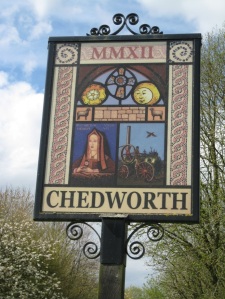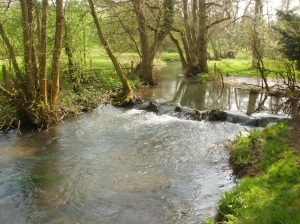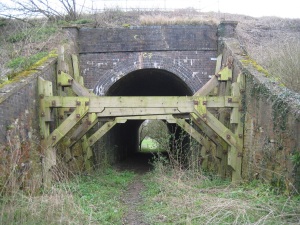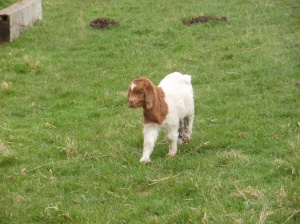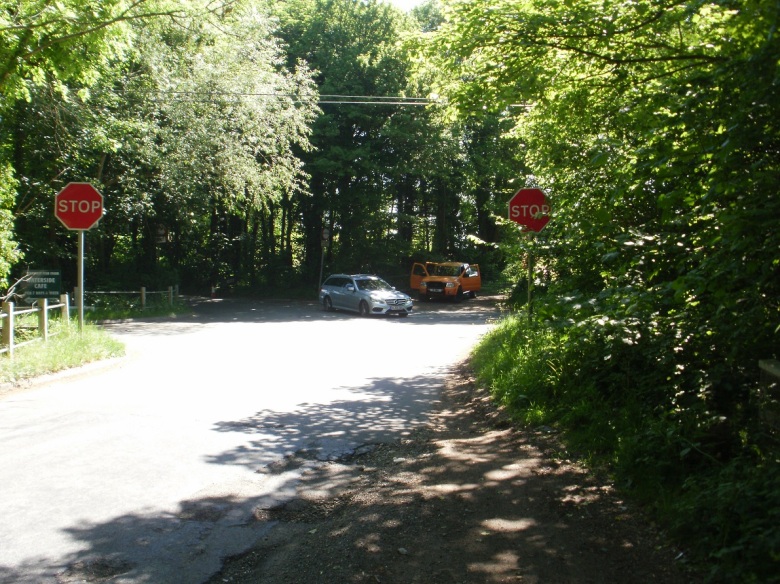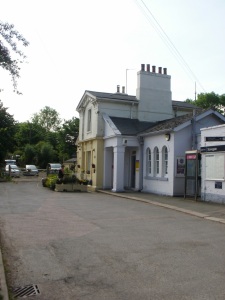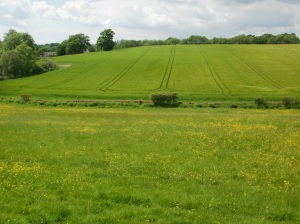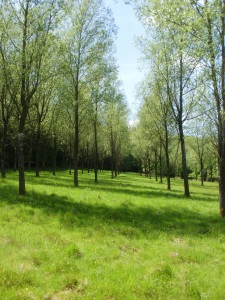The next section of our walk back to Sandhurst would pass through Fairford. As the crow flies it was a distance of about 8 miles. To reach Fairford would mean walking through one of the largest cache series we have seen (the Great Cotswold Walk or GCW series) comprising over 130 caches!
What to do ? Do we walk to Fairford and ignore every cache on our way ?
Do we walk to Fairford and attempt every other cache ?
We did neither. We decided to break our route at about the 4 mile mark in Bibury. This would give us about 30 caches to find and a reasonable walk too.
Of course there were a few other non-GCW caches to find, and after about half-a mile’s walk we reached one of these. A Church Micro set in the tiny village of Coln Rogers. A small Saxon church. In the foyer, there was a memorial plaque to the villagers who fought in WWI. But, almost as interesting was another plaque. This village lost no-one during the fighting in WWI. Such villages are known as “Thankful Villages”.
Our route away from Coln Rogers was tricky. Some of the ‘public footpath’ signage was obscured by verdant Spring hedge growth, which meant we started to walk through someone’s front garden! Whoops!
Then the sting. A fierce uphill climb, up a muddy path to reach a bridleway. The path was muddy and slippery and the tree branches were excellent tools to aid ascent.
At the bridleway we had a choice. To head South to Bibury, or North to a village called Calcot before taking a different path to Bibury. We again did neither. We headed South to find three caches (one had a high number of favourite points, but actually was a cache on a stick hidden in ivy) then return and head for Calcot. The bridleway was very muddy, but no so muddy that a horse rider galloped past us while we searching for a cache.

The bridleway yielded 4 caches, all very easy finds. In fact all the GCW series were easy finds. The cache owner gave very specific hints for each which made every find very quick. The payback for these quick and easy finds is that the majority of the caches were small film canisters, with perhaps half-a-dozen exceptions.
The highlight find of the day was in Calcot. The cache was part of the ‘Fine Pair’ series, where both a red telephone box and red post box are in very close proximity to each other. Like many of the post boxes we had seen recently this was now a mini library. Second hand books festooned shelves, and on the floor of the telephone box, was a large metal box used by children to put money in. It took us a couple of minutes to realise that this was the cache!
From Calcot we walked on a small road at first, then a track, then open fields.
The GCW finds came relatively frequently and quickly found. One of the trickiest to reach was screwed into the ‘orange hat’ used to mark the underground gas pipes. We wondered how the permission had been granted for placement on such a structure!

A field of slightly-interested cows were passed, and then.. a lake. A large expanse of water covered the footpath. We had seen pictures on http://www.geocaching.com, but didn’t realise it was a semi-permanent feature. The cache owner knowing this, had placed the next cache some way from the ‘true’ footpath, so that it could be used a bearing to guide cachers around the lake. Very thoughtful.
We had seen no-one all day, then suddenly there was loud barking. We were approaching some kennels and the dogs were barking at a Duke of Edinburgh’s party heading in the opposite direction to us. As usual a collection of teenagers exhibiting little map-craft were being ‘guided’ by a leader some yards behind. We warned them of the lake and the cows!
The kennels were just outside the small village of Ablington, where we decided to go slightly off route and collect a couple of extra GCW caches. Here a bus stop seat provided us with the opportunity for a breather, and to sign the log of an adjacent cache – wedged in a squashed film canister tucked behind the village notice board, in a concrete bus shelter.
We had been following, albeit from afar, the River Coln from the North, but at Ablington we crossed the river to walk on the river’s Southern bank to Bibury. We struggled with a couple of these caches – our brains must have been fading – or the GPS wasn’t as accurate as it could have been, but we arrived in Bibury having found every cache attempted.
Bibury is one of THE tourist honeypots in the Cotswolds and it was mid-afternoon, and visitors were everywhere. (You can even get a Cotswold Tuk-Tuk ride in the Cotswolds! https://www.cotswoldtuktuktours.co.uk )

Fortunately for us we could bypass the town and head in from a different direction. A cache under a horse trough and another next to the Cricket Field both retrieved with minimal muggle interference.
Our final cache on our walk was, like our first, a Church Micro. This time we had some memorial stones to find and undertake a simple calculation to acquire the co-ordinates for the final hide. (The term ‘simple calculation’ doesn’t apply if its the last cache of the day!). We then discovered we had walked by GZ some 15 minutes earlier. Grr! However what a find! The cache was hidden in a coffin shaped container! A macabre end to the day’s very successful walk.
As we headed to the car, we took the obligatory photos of Bibury (now thankfully much quieter), and we realised we had equalled our best ever day’s caching. Then we remembered, there was another cache parked in a layby not far from where our other car was parked back at Foss Cross. So, on the way home, we pulled into this layby, and found, not for the first time, a film canister.. yielding us a record breaking number of 31 caches! Woo ! Woo!
Some of the caches we found :


























